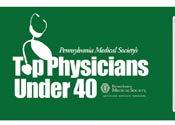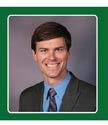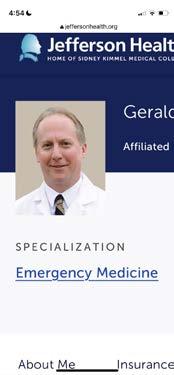BCMSScript.
Newsletter of the Bucks County Medical Society


President’s Message
Summer 2023
OUR MISSION
The Bucks County Medical Society strives to advance the professional and personal development of its physician members by providing educational and practice related resources as well as legislative advocacy. Moreover, the Bucks County Medical Society seeks to promote optimal outcomes for our patients as well as the public health of the Bucks County community.
EDITORIAL BOARD
Marilyn Heine, MD, Editor in Chief
J. Matthew Bohning, MD
Hannah Do, MD
 John Gallagher, MD
John Pagan, MD, MBA
John Gallagher, MD
John Pagan, MD, MBA
Greetings and welcome! Thank you for reading this semi-annual newsletter and your continued membership. My name is Hannah Do and I am your 175th President of the Bucks County Medical Society. I am a gastroenterologist in Doylestown. My involvement in PAMED started in 2018 after completing the year-round leadership academy. Since then I remain active as the Vice Chair of the PAMED Women Physicians Section.
It has been my honor and pleasure to serve this community and help implement our mission of advancing the professional and personal development of our physician members. The Bucks CMS has hosted several continuing medical and practice educational events. We also provide relevant legislative policy updates along with opportunities to advocate through our yearly legislative roundtable breakfast with local lawmakers. Furthermore, the Bucks County Medical Society makes charitable donations to non-profit groups that improve outcomes for our patients as well as the public health of the Bucks County community. In 2022, we began the process to establish a scholarship to, in the future, help deserving medical students from Bucks County.
To learn more and consider making a donation to help the future generation, please see:
https://www.foundationpamedsoc.org/DonateToBucksScholarship


My work in the society has shown me that we have the power to become the leader that we need. It is imperative with so many active issues and changing landscape of healthcare that we continue to have an organized voice.
The society has also been a great source of communication, mentorship and camaraderie for me. I hope that it brings value to you and your family. I know that there are only so many hours in the day but I encourage you to continue to be engaged. You can find more information on our website: https://www.buckscms.org/
Please join me and support PAMPAC at pampac.org. PAMPAC is our political muscle to advance advocacy for physicians
For any questions, comments, or just to connect please feel free to email me directly at DrHannahDoPAMED@gmail.com or our general mailbox at buckscms@pamedsoc.org
Be well,
Hannah H. Do, MD President, Bucks County Medical Society
Realizing PAMED’s Long-Standing Vision
John Pagan, MD, MBA Chair and CEO at Pennsylvania Collaborative (PACN)

General Surgeon, Upper Bucks County
The Care Centered Collaborative (CCC) subsidiary of the Pennsylvania Medical Society (PAMED) has come a long way from the vision of the PAMED House of Delegates (HOD) over a decade ago that urged our physicians and PAMED to “Get in the Game” of quality and value as the healthcare paradigms and payments shifted:
“The Pennsylvania Medical Society (PAMED) must position physicians to lead and shape health care delivery to assure that the evolving system provides quality and value to patients and the community.”
Subsequently, our PAMED HOD took a bold step beyond any other state medical society and committed resources to establish the Practice Options Initiative (POI):
“For decisions that are imbued with clinical care significance, it is imperative that physicians have substantial and direct participation with real power to influence the outcome. In many cases this requires that we lead the initiative. . . The Pennsylvania Medical Society supports the development of the POI to explore collaboration among physician-led networks and enable engagement by physicians of all practice types.” – 2016, Practice Options Initiative
The PAMED HOD POI formed the Care Centered Collaborative and later its underlying Pennsylvania Clinical Network (PACN). The PACN allows quality-minded practices to collaborate to approach payors for access to value-based care and quality recognition programs that are otherwise unavailable to these practices. Importantly, PACN-member practices retain their independence to choose where and how best to serve their patient populations while linking together through a common population health data infrastructure. Over time, these practices gain the tools needed to not only survive but also to thrive in a value-based payment world. Most significantly, this bold PAMED vision provides Pennsylvania physicians and their patients with an alternative rather than consolidating into larger megahealth systems. Even physicians in employed settings can benefit from this alternative by recognizing that there are choices of practice models.
Unlike any Other Clinically Integrated Network
A clinically integrated network (CIN) is a collaborative organization of healthcare professionals and facilities that work together to improve patient care quality, reduce costs, and enhance patient outcomes by considering the care not only of the individual patient but also the populations and cohorts of similar patients in a practice.
The PACN is designed to promote the integration of care across different healthcare settings and physician offices and is composed of Pennsylvania physicians and other health care professionals who have agreed to work together and share information in order to improve patient outcomes.
The goal of a CIN is to provide patients with highquality, cost-effective care by coordinating care across all aspects of the healthcare system, while also creating a sustainable business model for clinicians. CINs typically use data aggregation and technology, and care management insights to identify best practices and ensure that patients receive appropriate care at the right time, in the right setting, and by the right healthcare professional.
The PACN was uniquely structured from inception and is the only known statewide, state medical societysponsored clinical network. Since physician-led networks have better success in achieving savings and improving quality scores with better efficiency than non-physicianled organizations, PACN physicians self-govern through a robust committee structure guided by physician leaders on its Board. This unique governance is not top-down or dictated by non-clinical administrators or investors but rather by physicians of varying perspectives and talents.
Participating practices agree to coordinate their electronic medical record (EMR) of choice with the common data backbone of the PACN which marries the clinical data of the practice with claims data to ultimately crosscheck against an insurer’s quality recognition metrics. The data aggregation infrastructure is often the most challenging and costly hurdle to forming a successful clinically integrated network. PACN monthly dues are significantly discounted for PAMED-member practices.
PACN Enters the Quality Game
The PACN is a relative newcomer to the quality arena and began quality contracts with insurers in 2020. Through the PACN’s connection to one of those payors, Highmark, PAMED-member independent practices received nearly $4 million in the Community Cares Grant funds to improve care of their respective communities in 2021.
PACN practices have additionally received over $2.5 million from commercial payers for the quality care they provide.
2
– 2010, PAMED Blueprint
BCMSScript.
Celebrating our members with milestone years of medical service

The PACN also formed an Accountable Care Organization (the PACN-ACO) to participate in the 2022 Medicare Shared Savings Program (MSSP). This upsideonly CMS ACO will further grow the PACN’s practice and network quality expertise while providing yet another opportunity for our physicians to gain recognition for the quality care they provide. ACO participation is a de facto rite of passage for any integrated quality network on the long journey towards eventual risk contracting. The knowledge and experience gained in 2022 will serve the PACN-ACO, PACN practices, and most notably the network patients well in 2023 and beyond with increased resources for additional care management support tools.
While the majority of the PACN practices are in primary care, several specialist practices lend expertise and perspective to the network including GI, Allergy, pathology, ophthalmology, rheumatology, and others.
We’ve Only Just Begun . . .
The preliminary CCC successes demonstrate proof of concept and realization of a PAMED dream over a decade ago that Pennsylvania physicians can succeed in their practice model of choice when committed to data sharing and constant improvement. In addition to discounted liability insurance options, custom care management support tools, discounted data connection fees with certain EMRs, and other clinical and administrative practice support benefits, the value of the PACN is best captured in the words of its own physicians.

The below is from and internist after the very difficult COVID pandemic year in 2021:
“If it were not for the PA Clinical Network and their efforts, our office would not have finished 2021 above water. I would like to thank the quality team for their hard work with my office and for helping us to improve our focus on performance measures as healthcare transitions from fee for service to quality. Once again, thank you!”
And from a PACN family physician in 2022:
“Since converting to an independent practice, I feel my connection with patients has grown and my job satisfaction has grown. Additionally, I have found that my overall financial compensation is not much different despite working less hours and seeing less patients. I believe that the PACN is singularly focused on making sure I am successful.”
Going forward, further data enhancements and analytics will better guide our physicians to focus care on their most vulnerable populations and concurrently identify the many social determinants that influence the health of individuals and populations. For more information, please see: https://paclinicalnetwork.com/practices/ faq/
3 BCMSScript.
Collage credit @marilynheinemd
PAMED President, F. Wilson Jackson, MD, joined us for this special event.
Expert Views on Long-Term Care
Nearly 20 percent of Bucks County’s population is at least 65 years old. This includes community members who reside in long-term care. BCMS
Script connected with Daniel Haimowitz, MD, FACP, CMD, a board-certified internist and geriatrician in Bucks County and nationally recognized expert in long-term care.
Script: What does “long-term care” include?
“Long-term care” (LTC) encompasses a spectrum including home and community-based services, independent living, assisted living (AL) and nursing homes. AL has more residents and communities than do nursing homes but is far less staffed and has no federal regulations, while suffering from many of the same issues that nursing homes face.
Script: How did the pandemic impact LTC?
The COVID-19 pandemic has had a devastating impact on LTC residents and staff. One good thing to come out of the pandemic has been increased advocacy efforts in the LTC community. The pandemic underscored many of the problems in nursing homes. The way the U.S. finances, delivers, and regulates care in that setting is ineffective, inefficient, inequitable, fragmented, and unsustainable. A national report led to the creation of the Moving Forward Coalition, which has 7 committee focus areas: Person-Centeredness, Culture Change, Care Planning & Quality of Life; Staffing & Well-Trained Workforce; Transparency & Accountability of Finances and Ownership; Financing System; System of Quality Assurance; Quality Measurement & Continuous Quality Improvement; and Health Information Technology.

Script: What are LTC’s advocacy initiatives?
The pandemic was an extraordinarily busy time for LTC. AMDA – The Society for Post-Acute and Long-Term Care had weekly State Task Force calls, which became the State Based Policy and Advocacy subcommittee. I have had weekly calls with Congressman Brian Fitzpatrick and his District Director Kyle Melander for the past 3 years. Among many accomplishments, Congressman Fitzpatrick has co-sponsored the Nursing Home Disclosure Act (H.R. 177), landmark bipartisan legislation to improve public disclosure of nursing home directors.
AL initiatives are equally exciting. A national AL Delphi group I facilitate has written a position paper on Medication Optimization in AL. We are working with National Association for Regulatory Administration (NARA) to develop best practices for AL regulatory language. There is collaboration between AMDA and the Center for Excellence in AL called Be Well in AL to address other AL topics.
Locally, our county is supporting a new initiative to develop the Bucks County Long Term Care Partnership (BCLTP). Led by the Bucks County Health Improvement partnership (BCHIP), which links six acute care hospitals, the Bucks CMS, county leadership, and community health agencies to address gaps in community health resources, this model will be utilized to establish the BCLTP to share resources, best practices and identify collaboration opportunities.
There is much more work to be done! The value of health care professionals getting involved and building relationships to advocate for our LTC patients and their families has never been more important.
The Bucks County Medical Society Congratulates Daniel Latta, MD, FACS



Daniel Latta, MD is a colorectal surgeon with Grand View Health. He received his medical degree from Temple University and completed his residency at Lehigh Valley Hospital. Dr. Latta is an assistant professor of surgery at Lewis Katz School of Medicine at Temple University.
His nominator said, “Dr. Latta is a remarkable young physician who has served with excellence as our county medical society president this year. Dan has provided insightful leadership with outstanding dedication to our members.”
BCMSScript. 4
– A Top Physician Under 40
Celebrating a Local Public Health Champion

Sally Fabian-Oresic, R.N., M.S.N., recently retired after a 50-year career in public health, including 16 years as Executive Director of the Bucks County Health Improvement Partnership (BCHIP) and 7 years as Executive Director of the Ann Silverman Community Health Clinic (ASCHC). The Bucks CMS is a founding member of BCHIP and has contributed to support ASCHC. BCMS Script caught up with Sally here:
Script: What was your involvement in BCHIP?
BCHIP effectively identifies gaps in health services, works to address them, and improves the health status of Bucks County residents.
When BCHIP was first being developed in 1994 as a collaboration of Bucks County’s acute care hospitals, the Medical Society, and the local health department, I was working at the Bucks County Health Department (BCHD). The BCHD Director assigned me to be our representative to BCHIP’s Wellness Partnership. It was a new and dynamic way to work. We continually addressed health prevention and promotion countywide. When BCHIP decided to hire an Executive Director, I jumped at the opportunity.

During my time there, BCHIP achieved smoke-free campuses at all of Bucks County’s acute care hospital campuses, developed flu clinics and cancer screenings, and expanded resources to address Intimate Partner Violence. We established the BCHIP Adult Health Clinic and Doctors Care Clinic, but the greatest challenge was securing funding to maintain those two free clinics for the uninsured.
Script: How did you transition to work at ASCHC?
In 2015, I was invited to provide consultation services to the ASCHC Clinic and Board. After obtaining the BCHIP Board Chair’s approval, I began examining ASCHC operations. ASCHC’s mission is to provide healthcare to those in need in the community. I wanted to be part of an organization providing healthcare services and making a difference in individuals’ lives. I became the Executive Director at ASCHC in 2016.
At this time, ASCHC is the only free clinic in Bucks County and provides medical, dental, behavioral health, and social services to low-income, uninsured county residents. The care of those without any access to ongoing health services is a critical need. ASCHC serves more than 2,000 individual patients – children and
adults—through more than 5,700 clinic visits. The majority of ASCHC patients are hardworking residents of Bucks County who do not have access to health insurance due to their type of employment or lack of citizenship.
While I was at ASCHC, we developed a behavioral health program, added new medical examination rooms, improved the dental space, and expanded our focus of care toward a “wrap around approach.” The greatest challenge was providing ongoing healthcare to clinic patients during the COVID pandemic.
Script: What is your takeaway?
BCHIP and ASCHC are unique organizations that engage community leaders to address unmet needs of our neighbors. Leaders work tirelessly to help those who might otherwise fall through the cracks. We are extremely fortunate in Bucks County to have leaders— many of whom are volunteers—who care so deeply about the needs of others.

Bucks CMS Celebrates with Ann Silverman Community Health Clinic



5
BCMSScript.
Bucks CMS President Hannah Do, MD, Donna Angotti, MD, Kieran Cody, MD, join Jim Brexler, Doylestown Health CEO, honor Sally Fabian-Oresic, RN, MSN
https://www.buckscms.org/join.html
EMS Physicians Making House Calls

 Gerald Wydro, MD, Regional Medical Director Bucks County Emergency Health Service, and Alvin Wang, DO, FAEMS, Regional Medical Director Montgomery County EMS
Gerald Wydro, MD, Regional Medical Director Bucks County Emergency Health Service, and Alvin Wang, DO, FAEMS, Regional Medical Director Montgomery County EMS

Emergency Medical Services (EMS) came into its own over fifty years ago with the landmark report Accidental Death and Disability: The Neglected Disease of Modern Society1 demonstrating the need for organized systems of prehospital care. The document sparked the creation of prehospital / trauma systems of care to reduce morbidity and mortality in communities. Later, the EMS Systems Act of 19732 and the EMS Agenda for the Future3 created modern-day EMS systems, including physician medical direction and oversight. Today, EMS leverages cutting-edge equipment, evidence-based protocols, and specialized training to “bring the hospital to the patient”. EMS Physicians are a critical component of modern EMS to ensure well-designed, high-quality systems of care.
Physicians in the prehospital environment must have a unique fund of knowledge, combined with specialized experience, equipment, and training to function effectively. In 2010, the American Board of Emergency Medicine (ABEM) formally recognized this unique physician practice environment as a subspecialty worthy of board certification. Many EMS Physicians have risen through the ranks, often having served as EMTs or paramedics before medical school. This has allowed EMS systems to integrate medical directors who have “walked the walk” as EMS practitioners
Medical direction of EMS involves administrative responsibilities like credentialing, quality assurance, and training; however, there is an ever-increasing role for EMS Physicians to actively respond in the field4. EMS Physicians bring advanced diagnostic and therapeutic options to our patients. With cutting-edge equipment like ultrasound or specialized treatment options in airway management and advanced resuscitation, modern EMS Physicians bring substantial additional resources and clinical experience directly to patients.

Bucks and Montgomery Counties sponsor dedicated EMS Physician Response Teams. The physicians are dispatched via the 911 center, responding in specialty EMS Physician vehicles, bringing advanced equipment,

medications, and training to the scene. Whether functioning as part of a routine EMS response, a complex industrial accident, or a mass-gathering event. While direct patient care in the field is an important role, EMS Physicians also provide unique situational awareness during more complex prehospital events. Complex extrications, mass casualty incidents (MCI), congregate / vulnerable patient environments, hazardous materials incidents, and tactical responses all present unique challenges. The ability to provide a specialized physician, leveraging advanced equipment and training while focusing on patient safety, is extremely valuable. Additionally, these EMS Physicians ensure the continued wellness and protection of numerous other public safety responders present at these complex incidents.
The EMS Physicians of the Bucks and Montgomery County Physician Response Teams augment the outstanding first responders who serve our communities each day, bringing advanced care and treatment into the field to serve patients and communities. Our EMS Physicians still make house calls.
References
1 Accidental Death and Disability: The Neglected Disease of Modern Society. Washington (DC): National Academies Press (US); 1966.
2 JAMA. 1974:230(8):1139-1140. doi:10.1001/1ama.1974.03240080021019
3 EMS Agenda for the Future [electronic Resource]. U.S. Dept. of Transportation, National Highway Traffic Safety Administration; 1996
4 Physician Oversight of Emergency Medical Services, NAEMSP Position Statement. 2016 doi.org/10.1080/19003127.2016.1229827
6
BCMSScript.
Upcoming Events!

400 Winding Creek Blvd.
July 12, 2023
Board of Directors Meeting
In-person, Venue TBD
September 20, 2023
Board of Directors Meeting
Virtual
Legislative Roundtable
Fall, 2023
Venue and Date TBD
PAMED House of Delegates
October 27-28, 2023
November 15, 2023
Board of Directors Meeting


Virtual

YOU FOR BEING A BCMS MEMBER!
PRSRT STD U.S. POSTAGE PAID HARRISBURG, PA PERMIT NO. 922
Mechanicsburg, PA 17050-1885 THANK
BUCKSCMS.ORG


 John Gallagher, MD
John Pagan, MD, MBA
John Gallagher, MD
John Pagan, MD, MBA















 Gerald Wydro, MD, Regional Medical Director Bucks County Emergency Health Service, and Alvin Wang, DO, FAEMS, Regional Medical Director Montgomery County EMS
Gerald Wydro, MD, Regional Medical Director Bucks County Emergency Health Service, and Alvin Wang, DO, FAEMS, Regional Medical Director Montgomery County EMS






